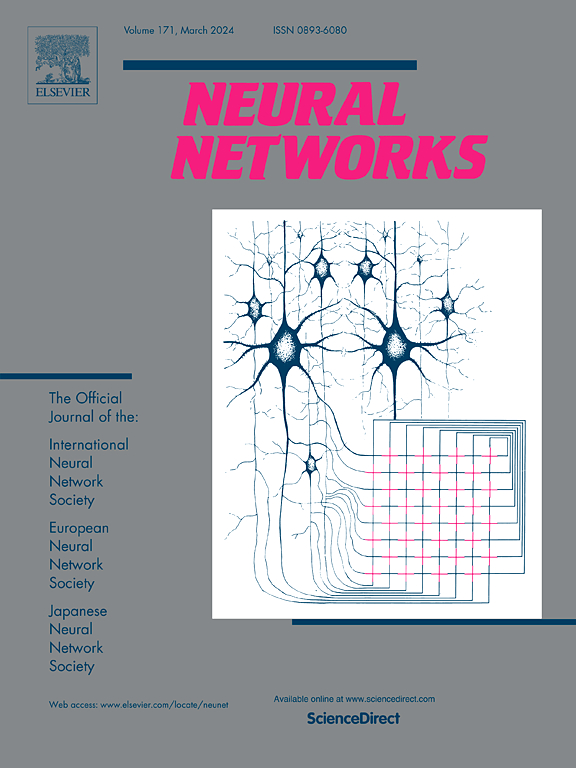使用 Pfaffian 激活函数的图神经网络的 VC 维度
IF 6
1区 计算机科学
Q1 COMPUTER SCIENCE, ARTIFICIAL INTELLIGENCE
引用次数: 0
摘要
图神经网络(GNN)是近年来出现的一种以数据驱动方式学习各种图领域任务的强大工具。基于消息传递机制,GNNs 因其直观的表述方式而越来越受欢迎,它与 Weisfeiler-Lehman (WL) 图同构性测试密切相关,并被证明是等价的(Morris 等人,2019 年;Xu 等人,2019 年)。从理论角度来看,GNN 已被证明是通用近似器,其泛化能力(与 Vapnik Chervonekis(VC)维度相关)(Scarselli 等人,2018 年)最近已针对具有片断多项式激活函数的 GNN 进行了研究(Morris 等人,2023 年)。我们工作的目的是利用普法函数理论框架,将对 GNN 的 VC 维度的分析扩展到其他常用的激活函数,如 sigmoid 和双曲正切。我们提供了有关架构参数(深度、神经元数量、输入大小)以及在图域上应用 1-WL 测试所产生的颜色数量的约束。理论分析得到了初步实验研究的支持。本文章由计算机程序翻译,如有差异,请以英文原文为准。
VC dimension of Graph Neural Networks with Pfaffian activation functions
Graph Neural Networks (GNNs) have emerged in recent years as a powerful tool to learn tasks across a wide range of graph domains in a data-driven fashion. Based on a message passing mechanism, GNNs have gained increasing popularity due to their intuitive formulation, closely linked to the Weisfeiler–Lehman (WL) test for graph isomorphism, to which they were demonstrated to be equivalent (Morris et al., 2019 and Xu et al., 2019). From a theoretical point of view, GNNs have been shown to be universal approximators, and their generalization capability — related to the Vapnik Chervonekis (VC) dimension (Scarselli et al., 2018) — has recently been investigated for GNNs with piecewise polynomial activation functions (Morris et al., 2023). The aim of our work is to extend this analysis on the VC dimension of GNNs to other commonly used activation functions, such as the sigmoid and hyperbolic tangent, using the framework of Pfaffian function theory. Bounds are provided with respect to the architecture parameters (depth, number of neurons, input size) as well as with respect to the number of colors resulting from the 1–WL test applied on the graph domain. The theoretical analysis is supported by a preliminary experimental study.
求助全文
通过发布文献求助,成功后即可免费获取论文全文。
去求助
来源期刊

Neural Networks
工程技术-计算机:人工智能
CiteScore
13.90
自引率
7.70%
发文量
425
审稿时长
67 days
期刊介绍:
Neural Networks is a platform that aims to foster an international community of scholars and practitioners interested in neural networks, deep learning, and other approaches to artificial intelligence and machine learning. Our journal invites submissions covering various aspects of neural networks research, from computational neuroscience and cognitive modeling to mathematical analyses and engineering applications. By providing a forum for interdisciplinary discussions between biology and technology, we aim to encourage the development of biologically-inspired artificial intelligence.
 求助内容:
求助内容: 应助结果提醒方式:
应助结果提醒方式:


